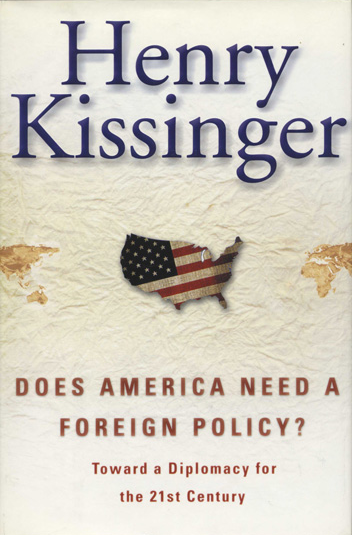
We are back for the second part of our Geopolitique 1990 AAR. The previous episode ended with me, President Scribe, having declared war against the Soviet Union to avoid losing the game for insufficient prestige, said prestige being exactly 0.
I may have been behind on the prestige front, but because I had focused my diplomacy on Europe and prepared for war, I started WWIII with decisive advantages :
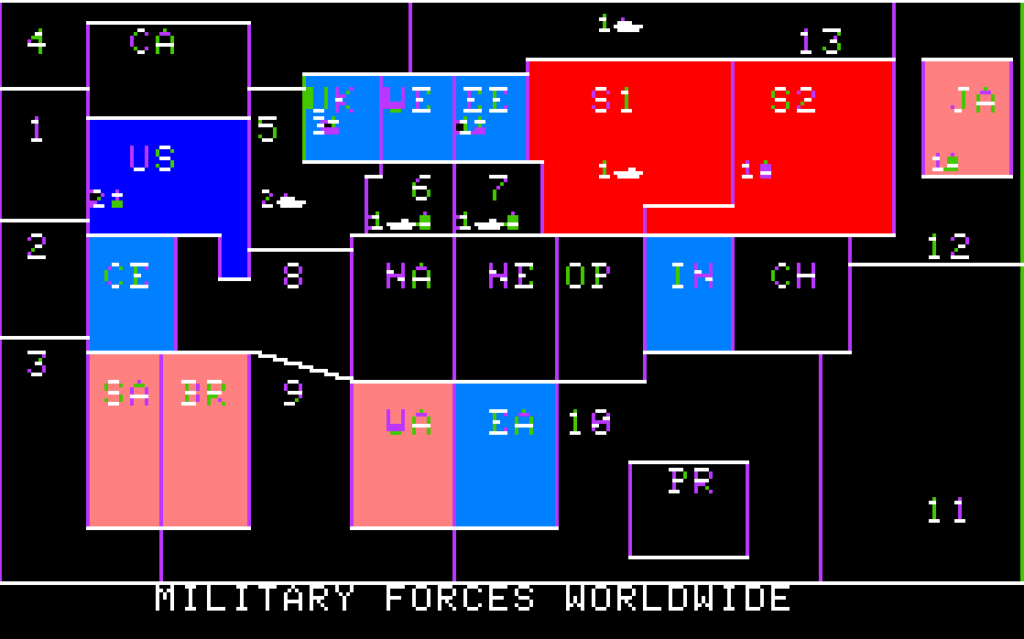
- I have 9 military units (6 armies 3 fleets) against only 7 for the Soviets (4 armies 3 fleets),
- I control Europe, which is both extremely valuable in terms of industrial capacity and easy to defend. The only valuable USSR ally is Japan,
- Finally, I start with more “mobilization” capacity : I can produce one unit every turn, versus 0.5 for the Soviets.
To win, I need either to occupy Soviet Union or to reach 60 points. With all of Europe under my control, I don’t start that far from that second target, especially since there are 16 more “safe” points to snatch on the American continent.

Spring 1997
Before getting to the fun stuff, I must first do the boring economic part. It is now simplified, with only one choice :
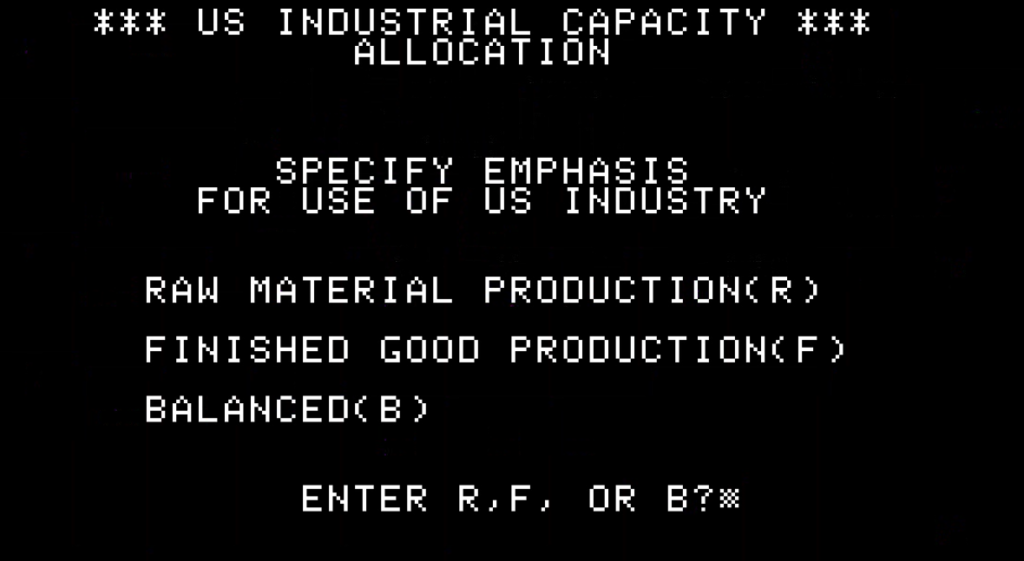
And then directly the production screen :
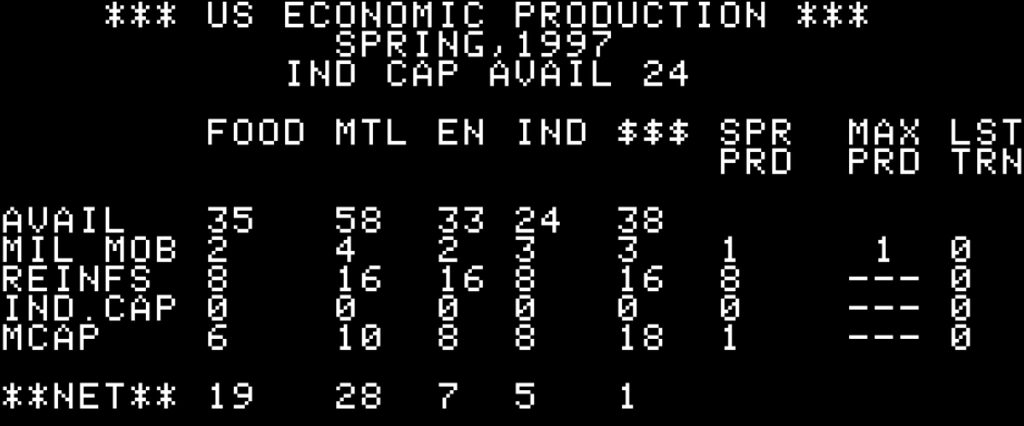
We already know most of the options from the “peace time” part of the AAR : mobilize new units, increase the maximum number of units you can mobilize in a turn or just industrial capacity.
The only new option – replacing diplomatic chits – is “reinforcements”. Each reinforcement point “heals” a unit up by one, up to its maximum.
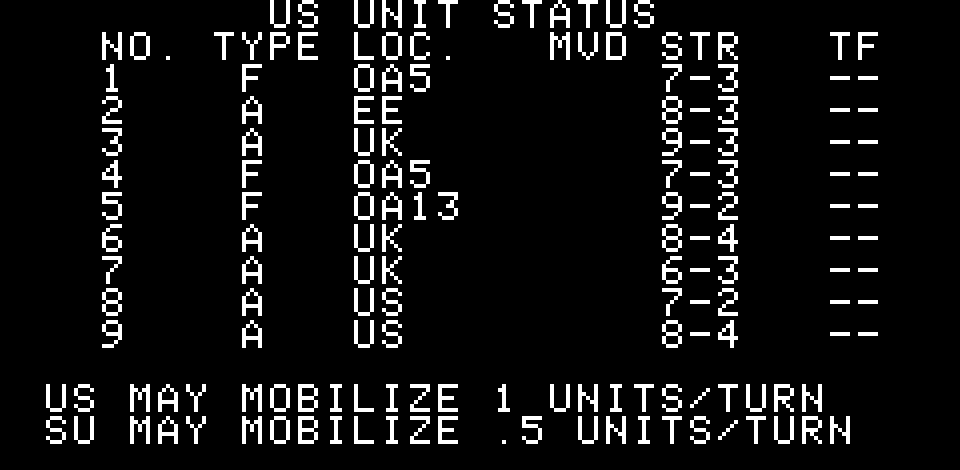
Reinforcements are extremely expensive compared to mobilizing a new army : the cost of a new army (always starting maxed out) is only between 2 times and 3 times the cost of ONE replacement. It is therefore always better to replace depleted units with new units rather than try to refit – provided, of course, that you have the mobilisation capacity. For now, I can’t mobilize more than 1 army, so in addition to that army I buy 8 reinforcement chits. I also increase my mobilization capacity by 1.
After a boring reinforcement phase that I don’t need to describe, it is time for the movement phase. The Soviets send one of their fleets, carrying an army, in the Atlantic while my European armies head for Eastern Europe.
The next phase is the air force allocation phase. Every unit in the game can send its planes over itself or an adjacent region. “Air values” are then compared and whoever wins has some degree of air superiority in the region :
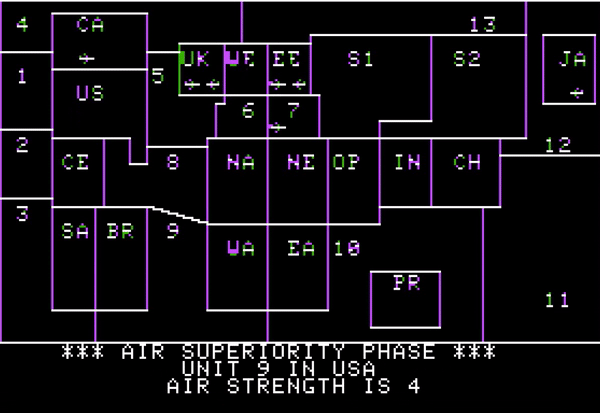
Acquiring air superiority is critical : it is necessary to launch an amphibious landing on a region or to attack a fleet, and even for a land attack it is such a massive force multiplier that you’d face an uphill battle without it.
Finally, the last phase of the game is the attack phase. It is time to show to the United States’ greatest rival that we can occupy their capital anytime …
… and so I attack Canada !
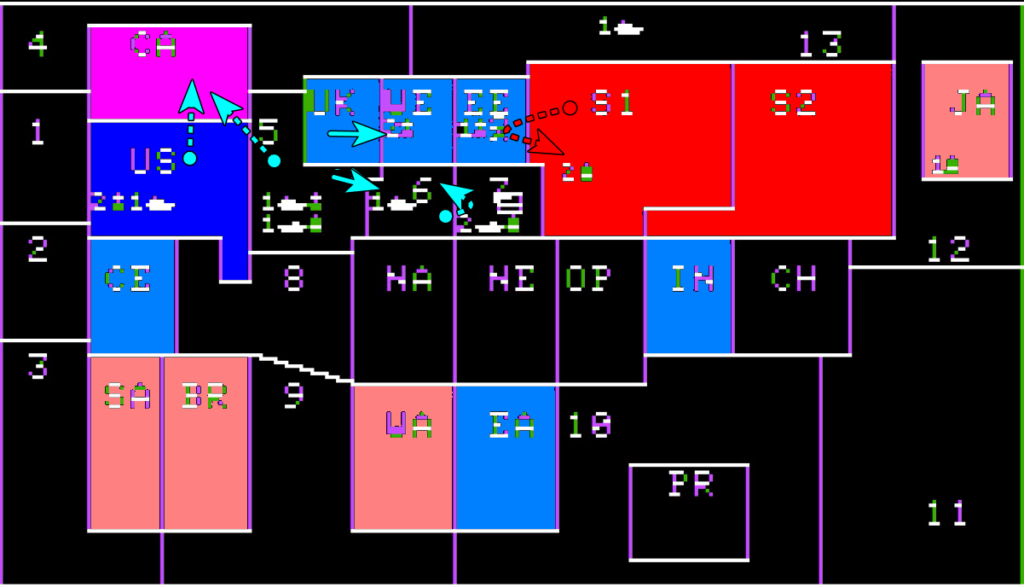
With 3 units contributing and massive air superiority, it is a trivial battle and I take control of one of the most industrious regions in the world. And also 9 VP.
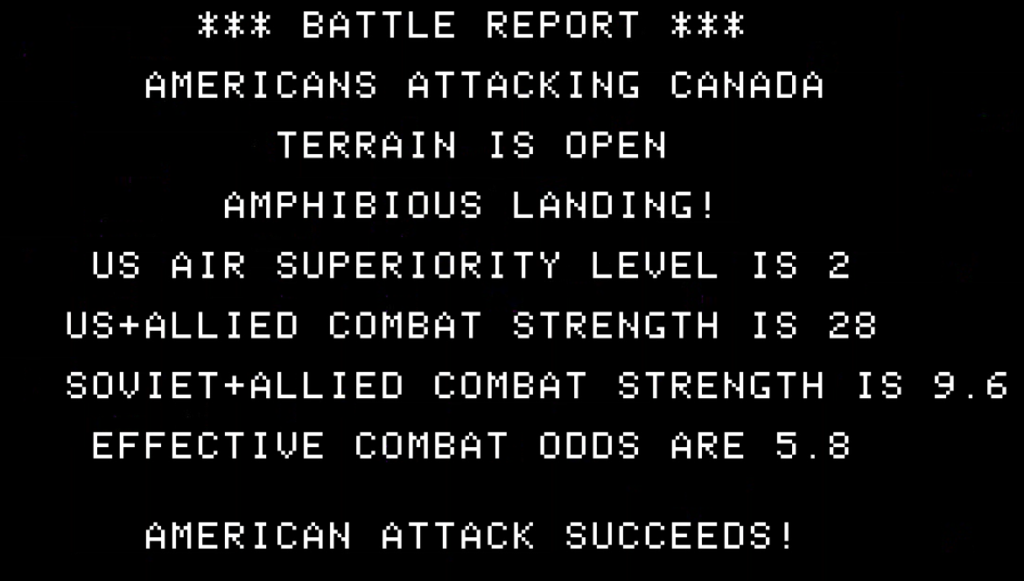
Meanwhile the Soviets launch an ineffective attack in Eastern Europe, and that’s the end of the opening turn.
Summer 1997
The ease with which I took Canada lets me design my first long-term plan. The USSR is building land armies, which makes it unlikely I can push my way straight into Soviet Union. Instead, leveraging the mobility that my fleets give me, I will go for a containment strategy :
- Keep increasing mobilization capacity, since I have a massive industrial advantage with all my “allies”, willing or unwilling,
- Hold Eastern Europe with 3 armies, with their armies allocating their planes only to defence,
- Seize Japan, which has only one unsupported garrison,
- Push in Central America and Africa,
Summer 1997 is therefore mostly preparation on my side, with a lot of movements and a probing attack on Japan that I know will fail. I also attack South America and, opportunistically, a Soviet fleet in the Atlantic.
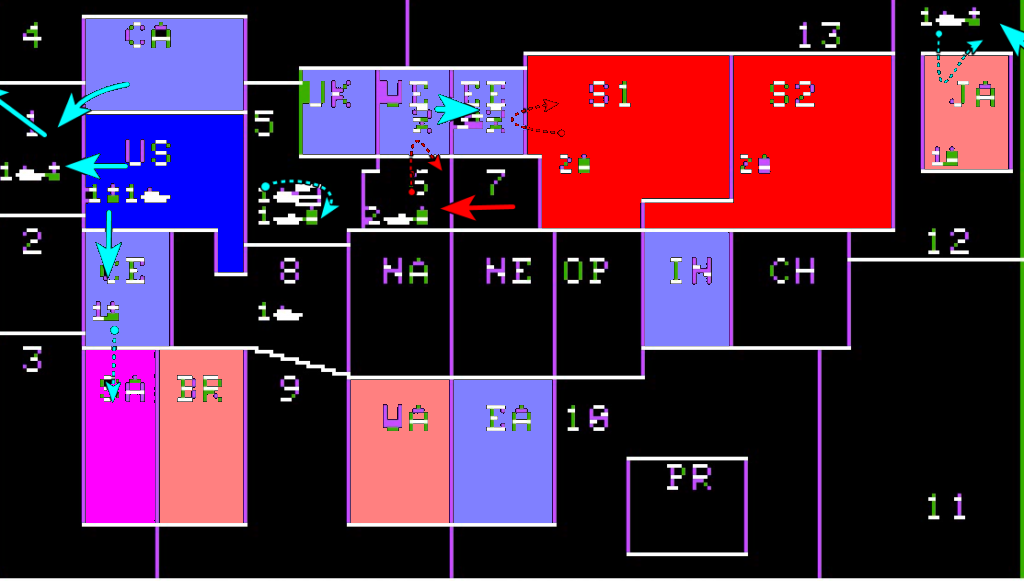
Meanwhile, the Soviets surprise me by trying to land directly in Western Europe, where I don’t have any defence left. I cannot even support from Eastern Europe, because the game does not allow you to “attack” a region you already control.
Fortunately, battle resolution goes the AMERICAN way ! The Soviet landing in Western Europe is repulsed by the local garrison despite a significant Soviet advantage.
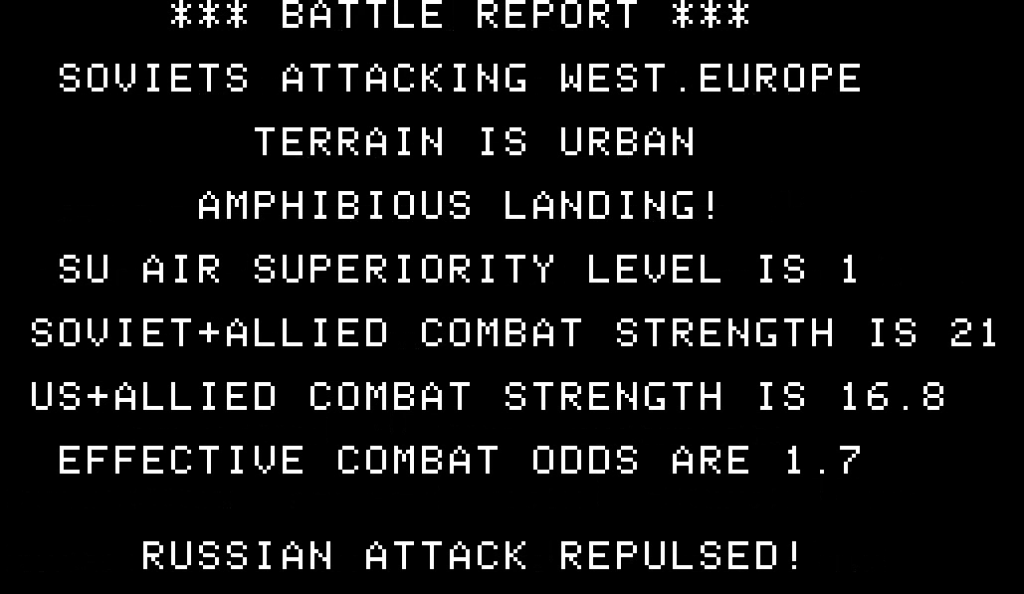
In South America, I win despite the odds going against me.
The Soviets also receive “heavy” casualties in the Atlantic (where I am attacking with 10:1 odds) and in Eastern Europe (where the Red Army is attacking at 1:5 odds).
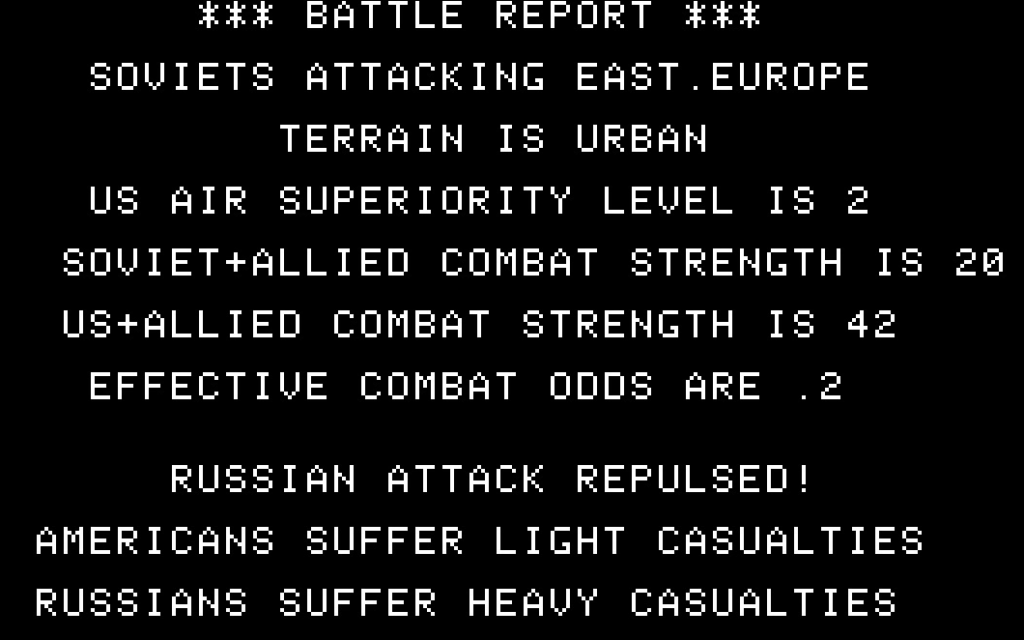
While the Soviet Atlantic fleet is not destroyed, I believe I can consider it neutralized, especially since its reinforcements never arrived.

The only failure is in Japan, as was fully accepted. For the rest, it was a perfect turn. Looks like Christmas came early for the US in 1997!
Autumn 1997
Not much progress for anyone in Autumn 1997. Both sides mobilize more troops and increase their mobilization capacity.
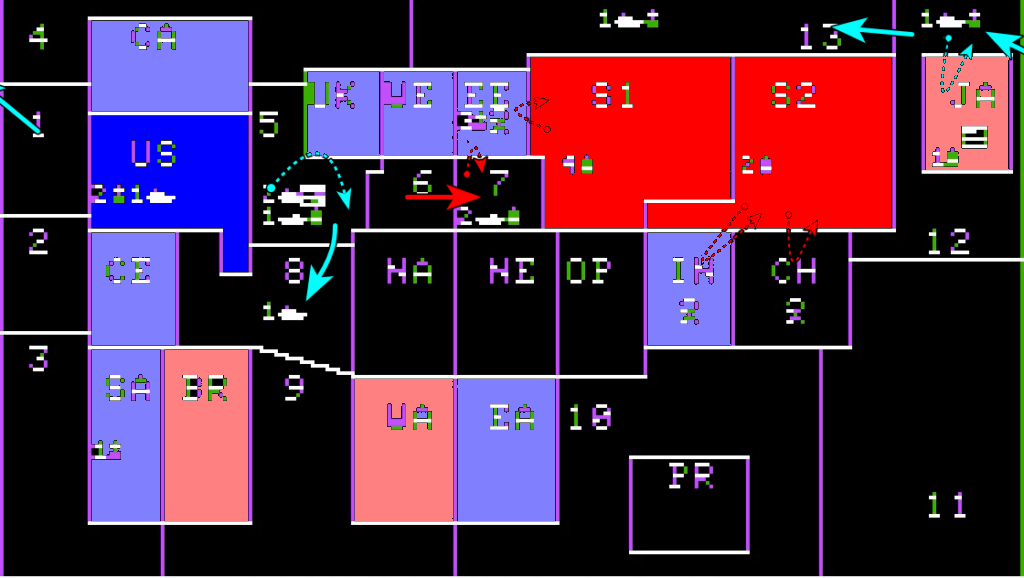
My army in South America is too weak to attack and waits for reinforcements. My landing in Japan is again repulsed with massive losses. Meanwhile, the Soviets try another attack on Eastern Europe (this time at 2:3 odds) and are similarly pushed back. They also spread out attacks between India and China, and are pushed back both times. Alas, even after this attack, China remains neutral.
Winter 1997
Things heat up a lot in winter. As the Soviets sink an absurd amount of resources in the conquest of Eastern Europe, I allocate my freshly mobilized units to the conquest of Africa. This does not have to take more than one turn because, like in Diplomacy, you can move an army as many times as you want from one fleet to another.
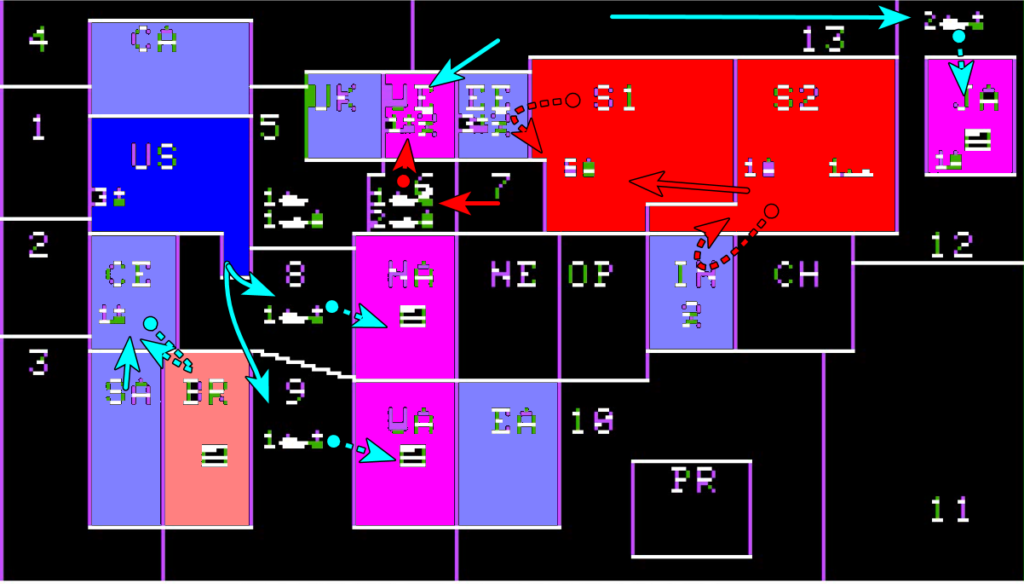
Both North Africa and South Africa are easily conquered. I also have the pleasant surprise of conquering Japan, destroying the Soviet army stationed there. I have the less pleasant surprise of failing to conquer Brazil, and least pleasant surprise of losing Western Europe to a surprise landing despite odds in my favour. God abandoned Western Europe – we all know why. Because of the French and the Belgians, that’s why.
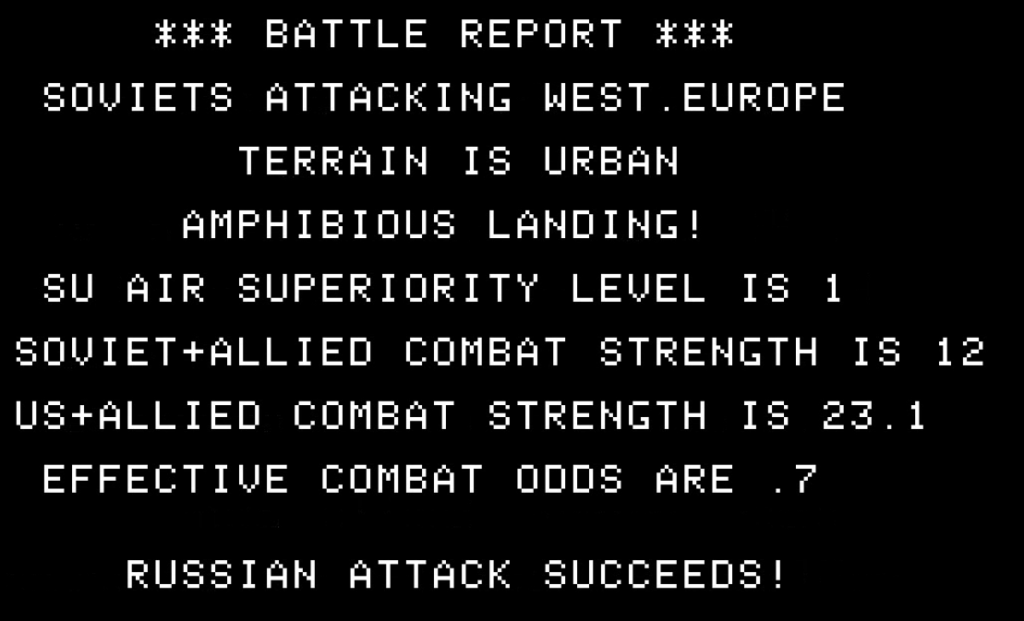
Trading Japan for Western Europe is still favourable : Japan is almost impossible to lose if properly garrisoned (there is only enough room to try to land one army at a time, while you can defend with up to 3), whereas Western Europe can easily be attacked from the UK, which in this universe has a land border with France – presumably the Channel dried up. Over the short term though, losing Western Europe makes Eastern Europe effectively untenable, particularly at this moment where I am almost out of air force in the area.
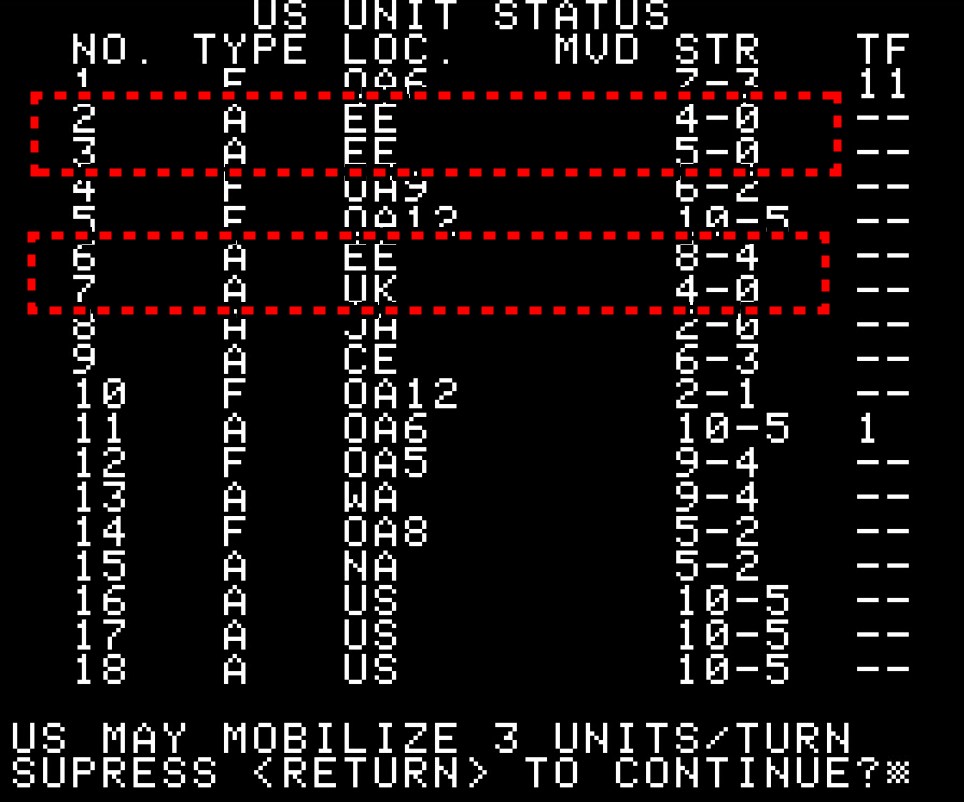
Spring 1998
The battle for Europe continues. I attack Western Europe from two directions while the Red Army attacks Eastern Europe once again. The battle in Eastern Europe is resolved first. My defenders are overrun, and because Western Europe is not mine the survivors have nowhere to retreat :

On the other hand, I manage to retake Western Europe, so win some, lose some I guess.
I fail again in my attempt to conquer Brazil. Someone needs to tell my generals to stop going through Amazonia. As for the Soviets, they fail for the third turn in a row against India, and newly also against Egypt.
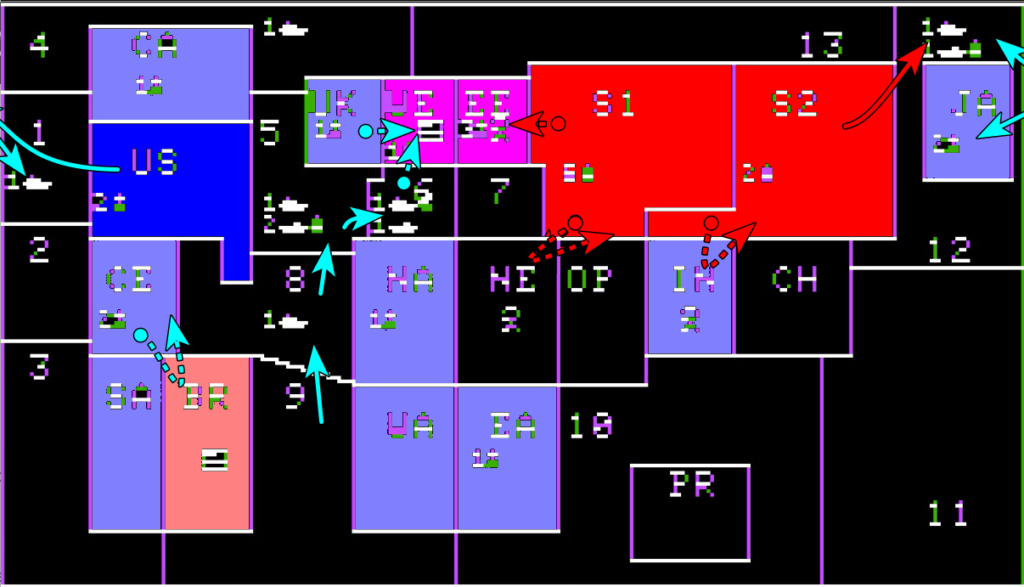
Summer 1998
I have 3 armies in perfect condition that I transport to Western Europe using the chain-convoy method. From there, it is all out attack with massive air support.
It is a massive battle, but my total air superiority makes the difference :
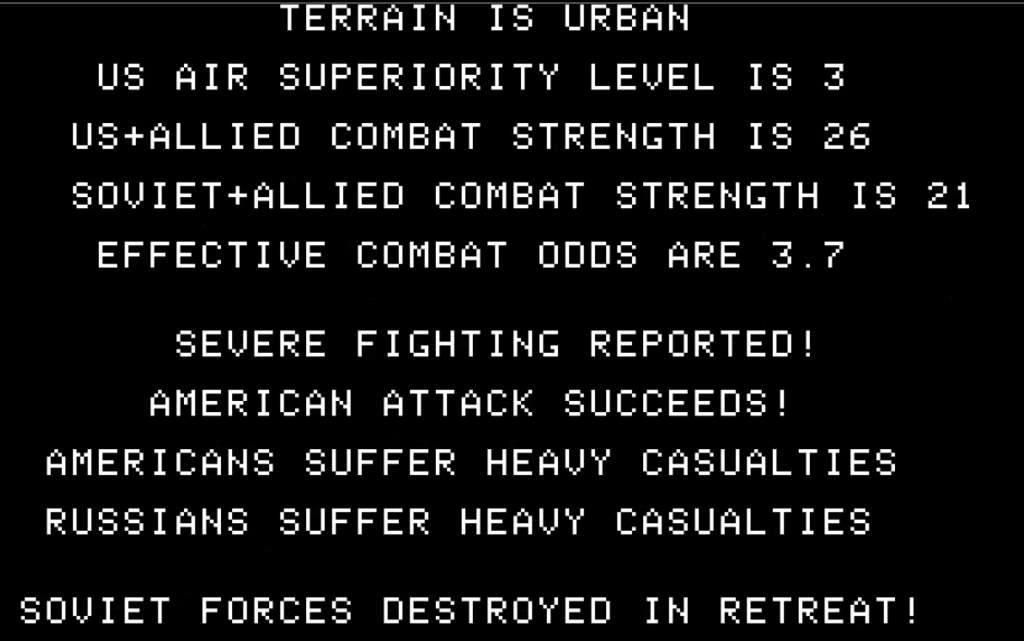
Conquering Eastern Europe deprives the Soviet Union of its last significant source of foreign industrial capacity, and brings me to the threshold of 60 points. Victory is near !
Meanwhile, I finally conquer Brazil (+5 VP !) while the Soviets occupy Egypt. The Soviet armies bounce in India and China yet again.
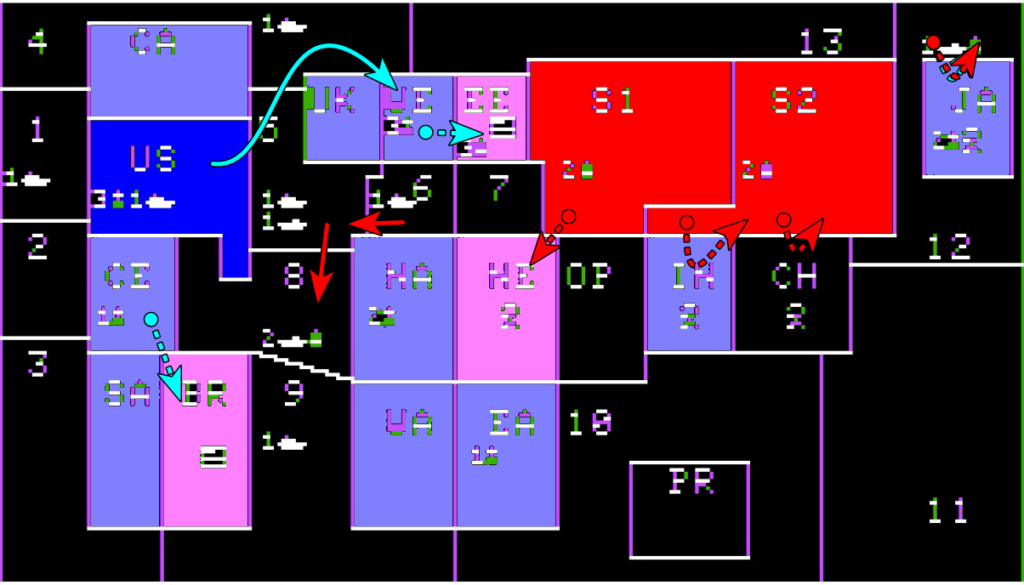
Autumn 1998
I have 65 victory points, so if I hold one more turn I will win the war. I also have a massive industrial advantage, so I can just as well try to march straight into Moscow ! Alas, it is a failure. My attempt to conquer Egypt and even the Republic of Indonesia (for the only reason that it is there) are also failures. As for the Soviets, they try a cheeky landing on the US Western seaboard, but are easily repulsed. All in all, an unimpressive turn, but that’s good enough.
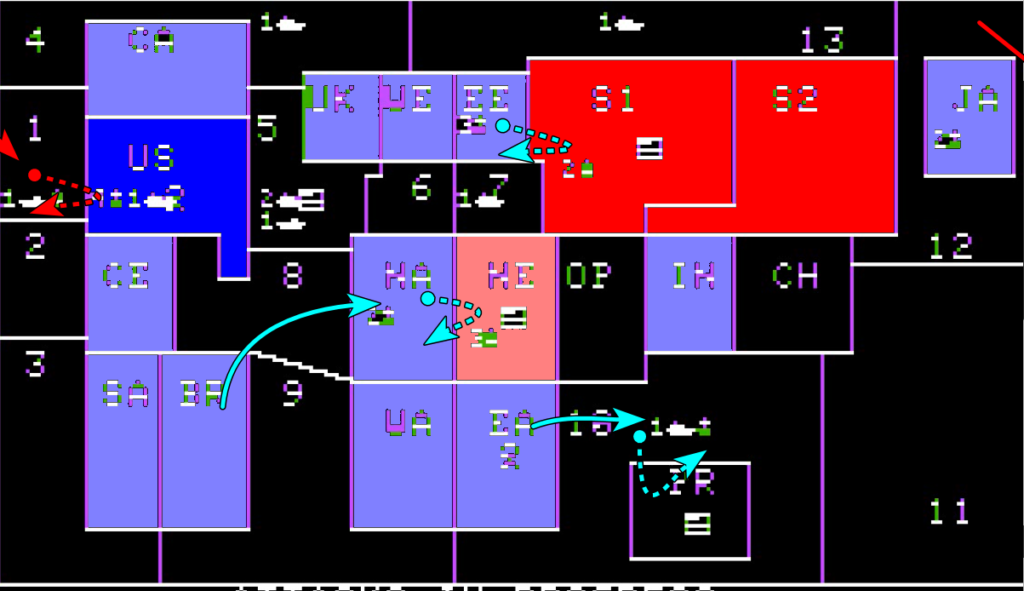
The game ends immediately when the turn is over, with a decisive US victory :
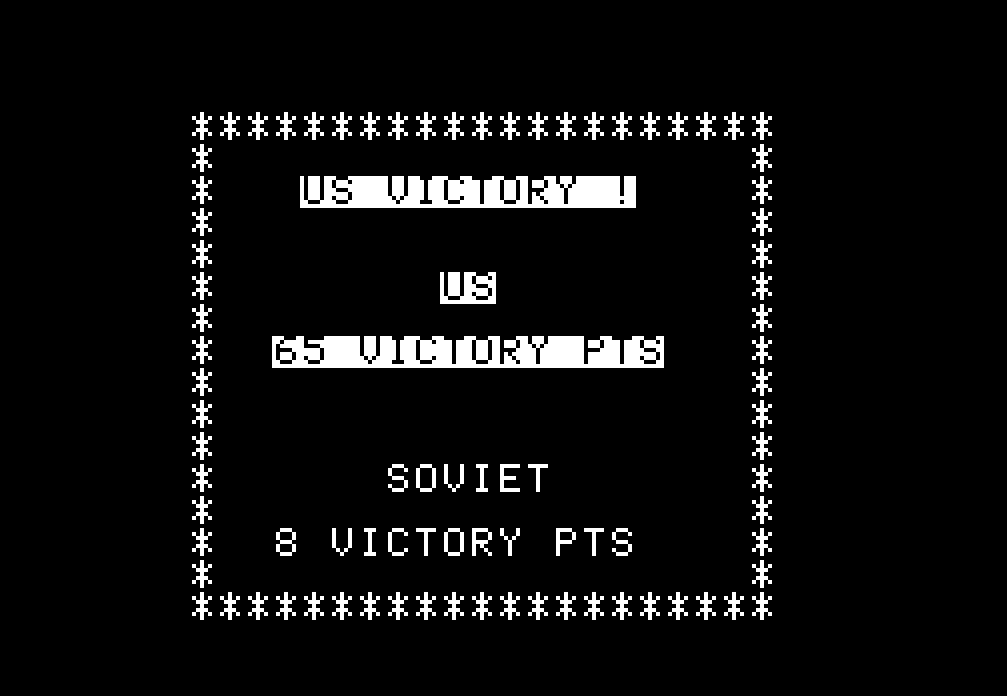
Hopefully, that’s enough for everyone to forget the appalling first 7 years of President Scribe’s mandate !
That’s all for today ! I don’t think the Soviets ever had a chance, as I started the war with a significant industrial, military and geographical advantage that just snowballed during the campaign. As frustrating and limited as Geopolitique 1990 often is, it is an ambitious title and possibly the first non-Japanese Grand Strategy game, with two contenders : Zendar (1982) and Chris Crawford’s intriguing Excalibur (1983), both coming very soon here.
One Comment
Even if this game is probably very tedious to play, I have to applaud it for the sheer number of situations you can be in. Randomized starts and the ensuing chaos are really underutilized in this part of the genre.